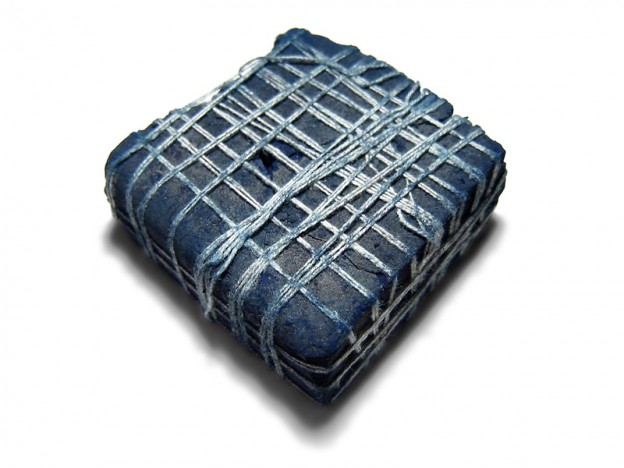So, enough of indigo already? Nah. We can never get enough. But we want to talk a little bit about some of the other dyes on our brands. And there are three main dyes other than pure indigo on our brands: natural indigo, sulphur and Indanthrene — we’re even going to look at different wefts and mud dyes.
So, you’ve gotta ask yourself a question. If indigo is so special, why bother to dye with anything else? There are countless reasons, but we’ll just talk about why these other dyes are so special.
Every dye is inherently special if it has the ability to change the color of a fabric. However, certain dyes differentiate from our gold standard, conventional indigo, as they have different color, chemical and fade properties.
Indigo was first domesticated in India and spread like wildfire through southeastern Asia as it was the first occurring source of effective blue dye in nature. Something about the shade was universally-appealing to the eye. Soon, it became common in all of southeastern Asia. It was very common to see “dye pits” where silk was dyed. Gradually, the dye spread to Mesopotamia and soon to the Mediterranean world, where Latin was spoke and it was introduced to an even broader range of traders and merchants. Here is a modern, ethical indigo extraction dye pit:

This went on for centuries. Due to the labor-intensive nature of the cultivation of the dye, it was often called “blue gold,” and for good reason — it was incredibly expensive. It became very in vogue to dye cotton fibers and ropes with indigo during the Edo Period of Japan, as silk was not permitted. This again spread to the Western world. Soon, the demand for indigo was so high that supplies ran low. Between 1897 and 1914 the importing of indigo went from almost 20,000 tons to just 1,000 tons — a huge loss.
The need for a change was imminent, as indigo fever had spread globally.
Seeing a probable deficit in natural indigo production, a German chemist began to work on an alternative in the middle of the 19th century. A man way ahead of his time. After the better part of two decades the synthesis of the chemical structure of indigo was finally determined. At this time organic chemistry was not only incredibly difficult to understand, but also incredibly difficult to replicate. There is a lot of science with natural indigo, as it is a live bacteria that must be fed! Also, before your very eyes in the by our brands’ dye vats, cotton ropes turn from green to indigo blue before your very eyes, as the dye oxidizes (seriously, Google that. It is amazing!). Natural indigo lumps are so beautiful:

By 1897, a new dyeing process had been developed. Indigo is not soluble in water, so a type of chemical had to be produced so the dye could dissolve in it. Two German scientists allowed for the creation of synthetic indigo, allowing the shared love of indigo worldwide to still be a reality, but compensate for the labor-intensive manufacture of natural indigo. Natural indigo is a lighter, softer and “earthier” shade of blue compared to synthetic indigo and you can see it in products made by ONI, Studio D’Artisan, Pure Blue Japan and others. Natural indigo is also special as it is usually dyed to the core, making the denim harder to break in and retain its color longer. And that is well-deserved, as the harvest and maintenance period of natural indigo can take up to a year. Take a look at one of Japan’s greatest treasures, PBJ’s natural indigo:

Synthetic indigo in a lot of the brands we carry still retains a level of beauty all its own. It tends to fade faster, which people love. Some brands like The Flat Head and Eternal rope-dye their denim so many times that from afar some say it looks black! We even have some jeans like the “02” series by Momotaro (and our special recent collaboration pair) that have a black weft over synthetic indigo. These will fade with higher contrast than a white weft indigo pair of denim. Some tell us that with pairs like these, they look like trousers at first! We also often see indigo wefts and these product high contrast fades, too. PBJ has a pair, the XX-020, where the yarns are dyed cobalt to the core — that pair will produce intergalactic and cartoony fades and we’re excited to see more of those broken in!
Often we see sulphur used in denim. That base allows for color-fastness moreso than a conventional indigo. Often it can be a little smelly at first, like a cave! We see this used in several brands we carry, including Samurai and Japan Blue. Often we see this in a black warp and a black weft combination, resulting in a very dark black denim that very, very gradually fades to a gray:

Pay careful attention in the coming months. A little birdie told us there may be a sulphur black warp/weft piece with one of our favorite brands, done differently than anything like it before. We’re excited.
We see denim often overdyed — black denim dyed over blue, and recent brand Big John has a denim like that. High-contrast areas turn blue with the black. PBJ has this as well. Other interesting wefts are prevalent, namely brown. Momotaro has a pair with a brown weft, which will provide the wearer with a ruddy looking fade, something that feels familiar instantly. Some brands even use mud to dye cotton brown. ONI’s BE series uses unbleached cotton to mimic the appearance of cotton in the wild, giving the wearer higher contrast fades. Fullcount has a pair, the 1109IC, where half the weft threads are indigo:

Our last stop is a very special dye used by Pure Blue Japan that possesses a singularity unparalleled in its field. There is something so special about this dye. It is called Indanthrene. Used in military combat uniforms, this dye is resistant to fading and will keep it’s color through nearly anything. Some say it is even resistant to acids and bleaches. Indanthrene is the real deal and we’re always very stoked when we get PBJ’s NC-011BK in. They are the real deal, black as midnight and stay that way.
So much goes beyond regular denim made with an indigo warp and a bleached cotton weft. The denim world’s surface has been barely scratched. The future is bright.

